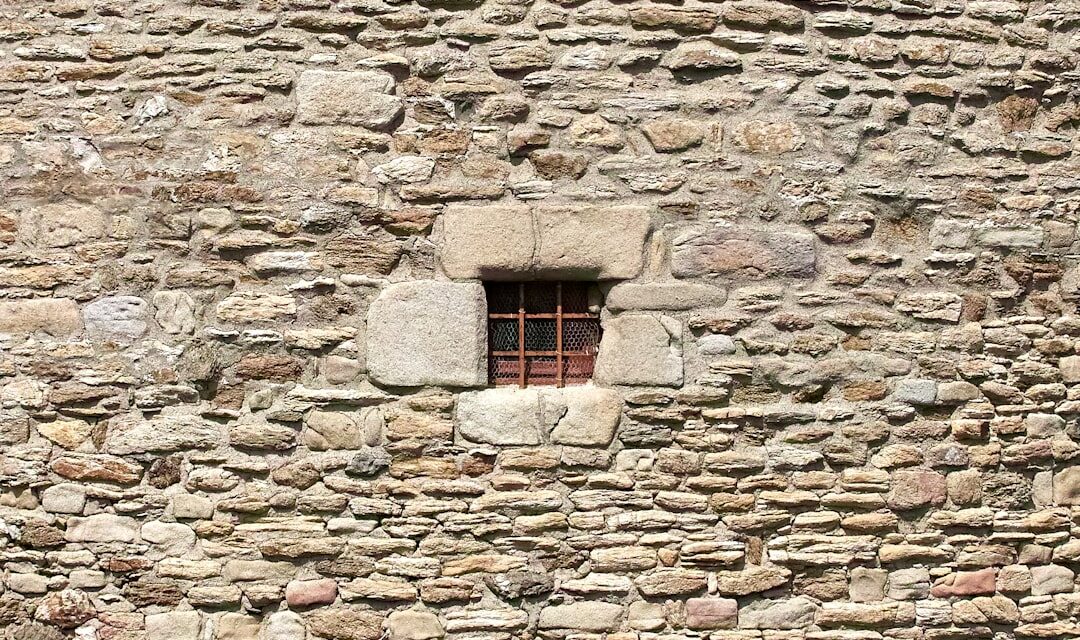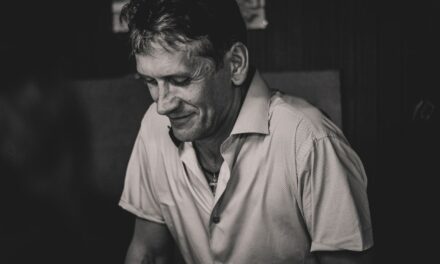The early life of an artist often serves as a foundation for their creative journey, and this is certainly true for many renowned figures in the art world. Born into a modest family, the artist’s formative years were marked by a profound curiosity and a keen eye for the world around them. Growing up in a culturally rich environment, they were exposed to various artistic influences from an early age.
This exposure ignited a passion for art that would shape their future. Their parents, recognising their talent, encouraged them to pursue formal education in the arts, leading to enrolment in a prestigious art school. Here, they honed their skills under the guidance of accomplished mentors who instilled in them the importance of technique and expression.
During their time at art school, the artist was immersed in a diverse curriculum that included drawing, painting, and art history. This comprehensive education allowed them to explore various styles and mediums, ultimately shaping their unique artistic voice. The rigorous training not only refined their technical abilities but also encouraged them to experiment with different forms of expression.
It was during these formative years that they began to develop a distinctive style that would later captivate audiences and critics alike. The combination of early life experiences and formal education laid the groundwork for a successful career, fostering a deep appreciation for the nuances of art that would resonate throughout their work.
Summary
- Early Life and Education: The artist’s upbringing and academic background greatly influenced their artistic style and subject matter.
- Style and Influences: The artist’s work is characterised by a unique blend of various artistic influences, resulting in a distinctive and recognisable style.
- Still Life Paintings: The artist’s still life paintings are celebrated for their meticulous attention to detail and ability to capture the beauty of everyday objects.
- Use of Light and Shadow: The artist’s masterful use of light and shadow adds depth and dimension to their paintings, creating a sense of realism and drama.
- Composition and Arrangement: The artist’s compositions are carefully arranged to create visually striking and harmonious scenes that draw the viewer in.
Style and Influences
The artist’s style is a rich tapestry woven from various influences, reflecting both personal experiences and broader artistic movements. Drawing inspiration from the Old Masters, they embraced techniques that emphasised realism and depth, while also incorporating elements of modernism that allowed for greater abstraction and emotional expression. This blend of traditional and contemporary styles created a unique aesthetic that set them apart from their contemporaries.
Their work often features vibrant colours and intricate details, inviting viewers to engage with the subject matter on multiple levels. In addition to the Old Masters, the artist was influenced by the Impressionists, whose focus on light and colour resonated deeply with them. The ability to capture fleeting moments and the interplay of light inspired the artist to experiment with their own palette and brushwork.
They sought to convey not just the physical attributes of their subjects but also the emotional undertones that accompany them. This desire to evoke feeling through colour and form became a hallmark of their work, allowing them to connect with audiences on a profound level. The interplay of these diverse influences culminated in a style that is both timeless and innovative, reflecting the artist’s journey through the evolving landscape of art history.
Still Life Paintings
Among the various genres that the artist explored, still life paintings hold a special significance. These works serve as a testament to their ability to transform ordinary objects into extraordinary compositions. By carefully selecting everyday items—such as fruits, flowers, and household objects—the artist imbued each piece with meaning and narrative depth.
The still life genre allowed them to experiment with colour, texture, and form while also providing an opportunity for introspection and contemplation. The artist’s still life paintings are characterised by meticulous attention to detail and a masterful understanding of composition. Each arrangement is thoughtfully curated, with objects placed in a way that creates balance and harmony within the frame.
The interplay of light and shadow adds an additional layer of complexity, enhancing the three-dimensionality of the objects depicted. Through these works, the artist invites viewers to pause and reflect on the beauty found in simplicity, encouraging an appreciation for the often-overlooked details of everyday life. This ability to elevate mundane subjects into captivating works of art is a hallmark of their still life paintings, showcasing their skill and artistic vision.
Use of Light and Shadow
One of the defining features of the artist’s work is their exceptional use of light and shadow. This technique not only adds depth to their compositions but also serves as a powerful tool for conveying mood and emotion. By manipulating light sources within their paintings, they create dramatic contrasts that draw the viewer’s eye and guide them through the narrative of each piece.
The careful consideration of light allows for an exploration of themes such as transience, beauty, and the passage of time. The artist’s understanding of chiaroscuro—the treatment of light and shade—reflects a deep engagement with classical techniques while also embracing modern interpretations. Their ability to capture the subtleties of light interacting with various surfaces results in a dynamic visual experience.
Whether illuminating the delicate petals of a flower or casting shadows across a textured surface, each brushstroke is deliberate and intentional. This mastery over light not only enhances the aesthetic appeal of their work but also invites viewers to engage with the emotional resonance embedded within each piece.
Composition and Arrangement
Composition plays a crucial role in the artist’s work, serving as the backbone upon which each painting is built. Their keen eye for arrangement allows them to create visually striking pieces that maintain balance while also conveying movement and energy. The strategic placement of objects within the frame is not merely an exercise in aesthetics; it is an integral part of storytelling.
Each element is carefully considered, contributing to an overarching narrative that unfolds as viewers engage with the artwork. The artist often employs techniques such as the rule of thirds or leading lines to guide the viewer’s gaze through the composition. This thoughtful approach ensures that each painting feels cohesive while also allowing for moments of surprise and discovery.
By juxtaposing different shapes, colours, and textures, they create visual tension that captivates audiences and encourages deeper exploration. The result is a body of work that not only showcases technical prowess but also reflects a profound understanding of how composition can influence perception and interpretation.
Materials and Techniques
The materials used by the artist are as varied as their subject matter, reflecting a commitment to experimentation and innovation. From traditional oil paints to contemporary acrylics, each medium offers unique possibilities for expression. The choice of materials often informs their approach to technique; for instance, oil paints allow for rich layering and blending, while acrylics enable quicker drying times and bold colour applications.
This versatility allows the artist to adapt their methods based on the desired outcome for each piece.
Textures created through collage or unconventional materials add depth and dimension to their paintings, inviting tactile engagement from viewers.
The techniques employed are often rooted in both historical practices and contemporary trends, showcasing a willingness to push boundaries while remaining grounded in tradition. This fusion of materials and techniques not only enhances the visual impact of their work but also reflects an ongoing dialogue between past and present within the realm of art.
Recognition and Legacy
Throughout their career, the artist has garnered significant recognition within both national and international art circles. Their work has been featured in prestigious exhibitions, earning accolades from critics and collectors alike. This recognition is not merely a reflection of technical skill; it speaks to the emotional resonance and intellectual depth present in each piece.
As their reputation grew, so too did their influence on emerging artists who sought to emulate their innovative approach to composition and colour. The legacy left by this artist extends beyond individual accolades; it encompasses a broader impact on contemporary art practices. By challenging conventions and exploring new avenues for expression, they have inspired countless others to push boundaries within their own work.
Their commitment to authenticity and exploration serves as a guiding principle for future generations of artists seeking to carve out their own paths in an ever-evolving landscape. As time progresses, it is clear that this artist’s contributions will continue to shape discussions around creativity, technique, and artistic expression.
Market Value and Collectibility
As with many celebrated artists, market value plays a significant role in shaping perceptions of their work within the art world. The demand for pieces by this artist has steadily increased over time, reflecting both their established reputation and the enduring appeal of their style. Collectors are drawn not only to the aesthetic qualities of their work but also to its potential as an investment; pieces by this artist have been known to appreciate significantly in value over time.
The collectibility of their work is further enhanced by limited editions or unique pieces that offer exclusivity to buyers. Auctions featuring this artist’s work often attract considerable attention, with bidding wars driving prices higher than anticipated.
As collectors vie for ownership of these works, it becomes evident that this artist’s legacy will continue to thrive in both artistic merit and market presence.
Notable Works and Collections
Among the myriad works produced by this artist, several stand out as particularly notable contributions to their oeuvre. These pieces often encapsulate key themes or techniques that define their artistic vision while also resonating deeply with audiences. For instance, one iconic still life painting showcases an exquisite arrangement of flowers that exemplifies their mastery over colour and composition; it has become emblematic of their style.
Many notable works are housed in prestigious collections around the world, including major museums and private galleries. These institutions recognise not only the technical prowess displayed in each piece but also its cultural significance within broader art movements. The inclusion of this artist’s work in esteemed collections serves as validation of their contributions while also ensuring that future generations will have access to these important pieces for study and appreciation.
Exhibition History
The exhibition history of this artist reflects a dynamic career marked by numerous solo shows and group exhibitions across various venues worldwide. From intimate gallery spaces to grand museum retrospectives, each exhibition offers an opportunity for audiences to engage with their work in new contexts. These exhibitions often highlight different aspects of their artistic journey—whether focusing on specific themes or showcasing recent developments in technique.
Participation in international art fairs has further expanded visibility for this artist’s work, allowing them to connect with collectors and curators from diverse backgrounds. These events serve as platforms for dialogue around contemporary art practices while also facilitating cross-cultural exchanges that enrich both artists’ experiences and audience engagement. As exhibitions continue to unfold throughout their career, it becomes evident that this artist remains committed not only to sharing their vision but also fostering connections within the global art community.
Criticism and Controversies
Like many artists who push boundaries within their practice, this figure has faced criticism throughout their career—some constructive while others more contentious in nature. Critics have occasionally questioned certain stylistic choices or thematic explorations present in specific works; however, such critiques often serve as catalysts for deeper discussions about artistic intent and interpretation. Controversies surrounding this artist may arise from broader societal issues reflected in their work or from misunderstandings regarding specific themes addressed within individual pieces.
While these challenges can be daunting, they also provide opportunities for growth—both personally for the artist and collectively within discourse surrounding contemporary art practices. Ultimately, navigating criticism allows this artist to refine their voice while remaining steadfastly committed to authenticity in expression. In conclusion, this exploration into the life and work of this remarkable artist reveals not only their technical prowess but also an unwavering dedication to pushing boundaries within contemporary art practices.
From early influences shaping their style through ongoing engagement with light, composition, materials—and even navigating criticism—their journey serves as an inspiring testament to creativity’s power across time and space.
For those interested in learning more about the intricate techniques used by artists like Willem Kalf, a related article worth exploring is “Paper Mache Mastery: Complex Builds and Finishing Touches”. This article delves into the detailed process of creating intricate sculptures using paper mache, highlighting the skill and precision required to achieve stunning results. Just as Kalf’s meticulous attention to detail is evident in his still life paintings, the art of paper mache also requires a similar level of dedication and expertise.



